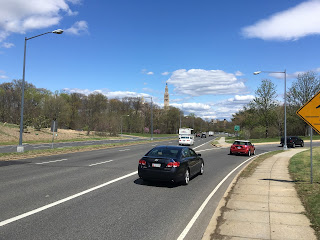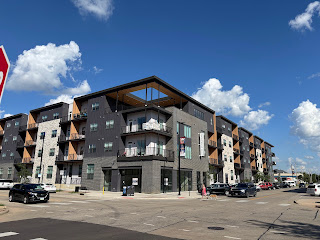 |
| Warm weather has your humble blogger eager to try Washington's numerous bike lanes and trails |
I opened the app, which revealed a map. The nearest yellow symbol denoting a bike was a short walk from my house, in front of an alley dwelling on Library Court SE.
However, it wasn't going anywhere without a major operation. It was secured with three straps and a rope. (Dockless bikes are locked electronically; this was clearly extra-curricular.)
I sent an e-mail to report the situation, then looked for the next-nearest bike. This was farther away, such that I took a city bus to get to it. (My dedication to you readers knows few bounds, as I'm sure you realize.) I found it easily, on the sidewalk in front of a bakery.
 |
| That's my helmet. I came prepared. |
So this bike wasn't going anywhere, either, at least not with me. For the record, the kickstand was also janky.
I sadly left the bike where I'd found it. Ofo reports my ride lasted 4 minutes, and went a distance of 75 feet. I burned 1 calorie, and saved 0 ounces of carbon. It cost me $1.
By now, though, more bikes were appearing on my map. One was a mere three blocks away. Getting there took me past the birthplace of John Philip Sousa!
Also, Christ Church Washington Parish, built in 1806 and still holding two services every Sunday morning.
A block west of the church was this bike.
I approached it cautiously, as one would after being "twice bitten." But it seemed ideal to my purposes, and I was ready to commit. However, at this point, my app froze. I couldn't get it to do anything. I don't know if it objected to my trying to get my second bike in less than an hour, or to my being a narc, or whether it was just exhausted from my tireless research done on your behalf (behalves?), oh devoted readers. (Apparently, this happens, too. The Ofo website suggests uninstalling and reinstalling the app.)
The bike and I stared at each other longingly, as though we were the Louisiana woman and Mississippi man made famous by Conway Twitty and Loretta Lynn. (At least I assume the bike was longing; perhaps I was projecting.) Then I walked home. At least I got my 10,000 steps for the day.
 |
| The snows of March have melted... let's ride! |


























































